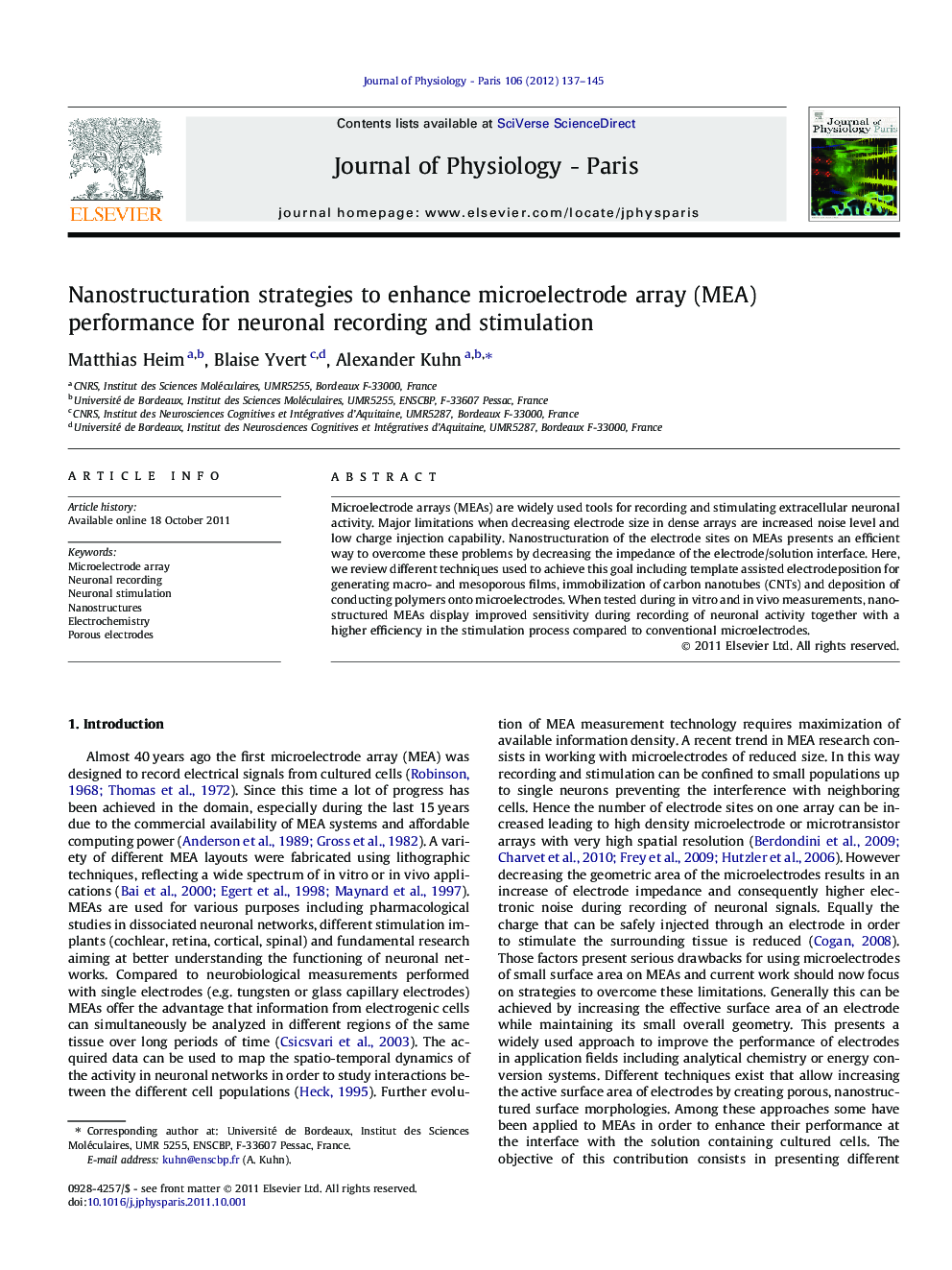| Article ID | Journal | Published Year | Pages | File Type |
|---|---|---|---|---|
| 2842332 | Journal of Physiology-Paris | 2012 | 9 Pages |
Microelectrode arrays (MEAs) are widely used tools for recording and stimulating extracellular neuronal activity. Major limitations when decreasing electrode size in dense arrays are increased noise level and low charge injection capability. Nanostructuration of the electrode sites on MEAs presents an efficient way to overcome these problems by decreasing the impedance of the electrode/solution interface. Here, we review different techniques used to achieve this goal including template assisted electrodeposition for generating macro- and mesoporous films, immobilization of carbon nanotubes (CNTs) and deposition of conducting polymers onto microelectrodes. When tested during in vitro and in vivo measurements, nanostructured MEAs display improved sensitivity during recording of neuronal activity together with a higher efficiency in the stimulation process compared to conventional microelectrodes.
► Performance of microelectrode arrays can be significantly increased by nanostructuration. ► Different methods of designing the electrode interface are described. ► Deposition of macro- and mesoporous films. ► Immobilization of carbon nanotubes and deposition of conducting polymers. ► In vitro and in vivo measurements show improved sensitivity during neuronal recording.
